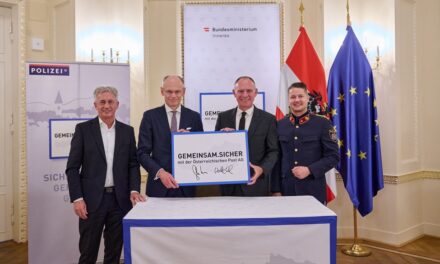
Austrian Post “ambitiously” implementing photovoltaics

Österreichische Post AG is pushing ahead with the expansion of its photovoltaic systems at full speed. Since the end of June, 10 megawatt peak (MWp) have already been connected to the grid, and by the end of the year, photovoltaic modules with a total output of over 19 MWp will have been installed at 26 locations.
In this way, Austrian Post is increasing its share of its own self-sufficiency with electricity from renewable energy sources to more than 20 percent on the balance sheet and making an important contribution to climate protection. Austrian Post operates the largest rooftop portfolio of photovoltaic systems in Austria and is now one of the top six domestic system operators – excluding energy suppliers.
“The energy transition is in full swing, by 2030 we will only be able to cover the electricity demand in Austria with clean renewable energy. To this end, we are also making record budgets available for subsidies, and I am pleased that Austrian Post is implementing the expansion of photovoltaics so ambitiously,” says Climate Protection Minister Leonore Gewessler.
“Photovoltaics is an essential component of our sustainability strategy. We want to maximize our own production of renewable energy and exploit surpluses economically. Thanks to the expansion of our photovoltaic systems, we already have 10 MWp on the grid, which allows us to recharge around 3,000 electric vehicles with solar energy. This not only makes us less dependent on external electricity suppliers, but also a pioneer in the energy transition,” says Walter Oblin, Deputy Director General, Member of the Management Board for Mail & Finance, Österreichische Post AG.
AUSTRIAN POST’S LARGEST PHOTOVOLTAIC SYSTEMS
Austrian Post has the highest photovoltaic capacity at its location in Vienna-Inzersdorf, where the Vienna Letter and Parcel Logistics Centres are located, among other things. Almost 0.9 MWp are already in operation on the roof of the mail logistics centre, and a further 2 MWp or so were connected to the grid on the roof of the new parcel logistics centre at the end of June. This will generate a total of around 2.9 MWp of photovoltaic capacity at the Vienna-Inzersdorf site. For the current year, an expansion of a further 1.5 MWp is also planned on the roof of the old parcel logistics centre, which is currently being converted into a delivery base. In total, Austrian Post will have installed a photovoltaic capacity of 4.3 MWp at this location this year.
Other large photovoltaic systems of the postal service are located at the logistics centers in Upper Austria (Allhaming), Styria (Kalsdorf), Tyrol (Vomp) and Lower Austria (Hagenbrunn). By the end of 2024, between 1 and 2.7 MWp of photovoltaic capacity will each be installed at these locations with the current expansion stages. The photovoltaic systems are usually embedded in planted green roofs, whose native plant species and woody plants are coordinated in such a way that they do not cast a shadow on the photovoltaic modules.
ENERGY STORAGE AS THE NEXT STEP
Austrian Post also wants to store the electricity generated by the power of the sun. A first energy storage system with a capacity of 134 kilowatt hours (kWh) is already in operation at the post office base in Bruck an der Leitha, and it will be used in combination with a photovoltaic system to optimise local self-consumption, for example when charging electric vehicles.
Electricity storage systems are also to be set up at other locations such as postal bases and logistics centres. Here, Austrian Post is taking a step towards a circular economy and giving batteries from decommissioned electric vehicles a “second life” by processing them, reusing them and initially bundling them into a stationary energy storage system at one location as a test. The electric vehicles in use are to be loaded as economically as possible. In addition, electric vehicles could also be operated like an electricity storage system in the future.
“In the final expansion, we potentially have batteries of around 10,000 electric vehicles that can be connected to the grid on weekends and carry loads, for example. With intelligent charging technology, we will also be able to feed energy back into the grid in the future through the concept of pooling several electric vehicles and provide support during peak loads. Our e-fleet could thus become a battery storage system for the whole of Austria. This is the vision of the future that we are already working on today,” says Walter Oblin.















